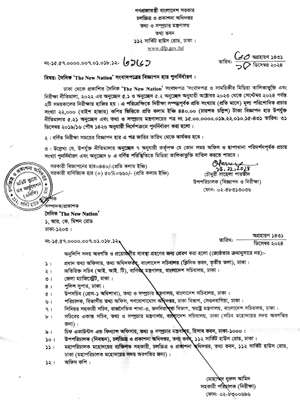The dramatic surge in rice imports during the first eight months of the 2024–25 fiscal year, rising over 2,000 per cent year on year, underscores the government’s urgent response to multiple rounds of devastating floods that battered Bangladesh’s agricultural heartland.
As per a report published in an English daily on Friday, with over $286 million spent on imports compared to just $13.3 million a year earlier, it is evident that authorities took the threat of food insecurity seriously.
Yet, despite this proactive move, retail rice prices have remained stubbornly high, revealing serious cracks in the supply chain and market regulation.
The government’s decision to strengthen food reserves was driven by necessity, following three successive floods that inundated 11 districts and displaced more than half a million people.
These exigencies warranted urgent measures to prevent supply shocks and protect vulnerable populations.
However, the paradox of ample supply through imports coinciding with price hikes at the consumer level raises troubling questions.
Market surveys in Dhaka and beyond show that retail rice prices have increased by Tk 2.0 to Tk 3.0 per kilogramme since January.
The sharp rise in prices of finer varieties, in particular, suggests more than just seasonal pressures.
Traders and observers point to alleged supply-chain disruptions, limited market releases from government warehouses, and possible market manipulation by powerful intermediaries.
In response, the government has revised its procurement rates upwards for the upcoming Boro season — Tk 36 per kilogramme for paddy and Tk 49 for rice — in a bid to support farmers and secure stocks.
While this may offer some relief to producers, unless matched by effective distribution mechanisms, it risks further inflation at the retail level.
At present, public food stocks stand at around 1.2 million tonnes — just above the critical threshold needed for emergency and welfare programmes.
Maintaining adequate reserves is commendable, but unless the food reaches consumers affordably and efficiently, the objective of market stabilisation remains unmet.
Economists have rightly warned that despite bolstering reserves, persistently high prices reflect inefficiencies and potential hoarding.
Stronger oversight, transparent stock disclosures, and tighter control over supply-chain bottlenecks are now imperative.
The government’s intention to protect both consumers and farmers must be met with action that breaks the price paradox.
Otherwise, record imports and fiscal sacrifices will amount to little more than a missed opportunity in the face of human hardship.


